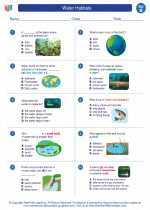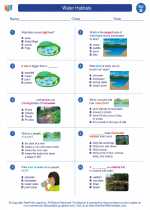Adaptations
Adaptations are special features that help plants and animals survive in their environment. These features can be physical, behavioral, or functional, and they allow organisms to better meet their needs for food, water, shelter, and reproduction.
Physical Adaptations
Physical adaptations are structural features of an organism that help it to survive. For example, a cactus has thick, waxy skin to store water and protect itself from the hot desert sun.
Behavioral Adaptations
Behavioral adaptations are actions that organisms take to survive. For instance, a bird migrating to a warmer climate in the winter is a behavioral adaptation to escape the cold weather.
Functional Adaptations
Functional adaptations are internal processes that help an organism survive. For example, a camel's ability to conserve and use water efficiently in its body is a functional adaptation for surviving in the desert.
Study Guide
- What are adaptations and why are they important for survival?
- Give an example of a physical adaptation in plants and animals.
- Describe a behavioral adaptation in animals.
- Explain how functional adaptations help organisms survive.
- Think about a specific environment (e.g., desert, rainforest, Arctic) and list three adaptations that plants and animals might have to survive there.
◂Science Worksheets and Study Guides Second Grade. Water Habitats

 Activity Lesson
Activity Lesson
 Worksheet/Answer key
Worksheet/Answer key
 Worksheet/Answer key
Worksheet/Answer key
 Worksheet/Answer key
Worksheet/Answer key
 Worksheet/Answer key
Worksheet/Answer key
 Vocabulary/Answer key
Vocabulary/Answer key
 Vocabulary/Answer key
Vocabulary/Answer key
